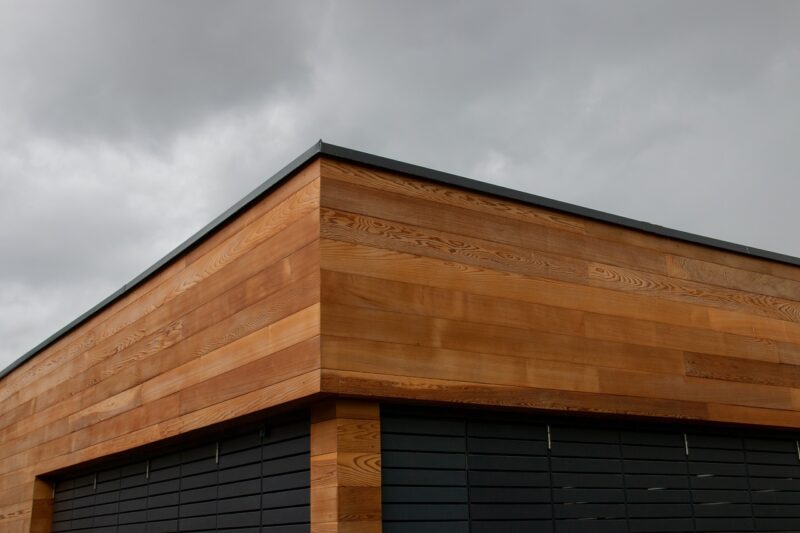Published: 07/05/24 By: Mike Bekin
When installing external timber cladding, a factor to consider is weathering. As with any material (even plastic!), your timber isn’t going to look the same after years of rain and UV exposure, and will often change colour after installation. But, how long does this take? To learn more, our EcoChoice timber experts have everything you need to know.
What is the Timber Weathering Process?
Timber is an organic material and, when left uncoated, it’s guaranteed to change colour in a process known as weathering. This is largely because of the effect of UV rays and water, as well as fluctuations in humidity and oxidisation. As your timber is exposed to the natural elements, the natural shade begins to shift, usually first becoming darker and then transitioning into a beautiful, silvery-grey hue.
Weathering is by no means a bad thing. In fact, many people love the weathered aesthetic of timber and will even purchase pre-weathered boards for their buildings! It shouldn’t affect the functionality of your timber, either, leaving it just as tough and hardy as when it was installed (with the right care, of course).
How Long Does Timber Cladding Take to Weather?
Love it or hate it, untreated timber cladding is going to become silvery-grey. But the speed at which your wood weathers isn’t going to be the same across buildings, with a number of factors affecting the rate it changes colour. These include:
- How much rain and sun the timber is exposed to
- The timber species you’ve chosen
- The design of the building
So, for example, a southwest-facing building in an area of high rainfall will weather quickly, as will the areas that are more exposed to the elements, like beams higher up the building away from the shelter of surrounding houses.
Completely naturally durable species such as Western Red Cedar or Larch will on average take longer to weather than a thermally modified species such as Thermo Redwood or Thermo Ayous.
Put all the factors together that speed up weathering, and your timber could turn grey in a few months. In drier, darker conditions, though, you may maintain the natural hue of your wood for a few years.
How to Prevent Timber Weathering
As we mentioned, some people will actively pay more for pre-weathered timber. However, if you prefer to keep your wood looking naturally colourful, there are ways you can prevent weathering.
The main option is to apply a finish to prevent weathering to your cladding. This will help to prevent colour fading due to sunlight and water, keeping a protective barrier between your timber and the elements. It should be re-applied every year or two, depending on the location of your building.
You can also stain, oil, or paint timber to stop those grey tones from seeping through. Though this will still affect the natural look of your cladding, it’ll maintain that fresh, bright colour for years to come.
Another preventative measure is to be considerate of weathering in your designs. By creating a more sheltered building, for example, you may be able to slow down weathering – though you won’t be able to stop it completely.
Choose Your Perfect Timber With Our Help
Regardless of your opinions on timber weathering, choosing the right species for your project will help you be happy from the get-go. If you need help finding your dream timber, give us a shout. Our team of timber experts will be happy to lend a hand, matching you with the perfect species for your unique cladding project.
Tags: Cladding, Timber, weathering
Categories: Insights
